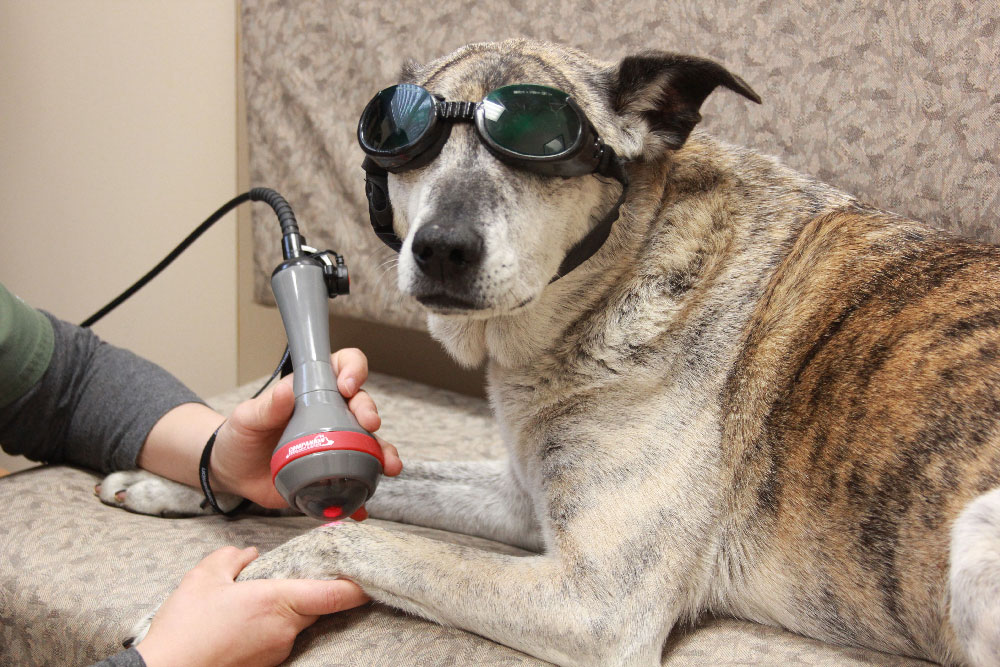Laurie's Blogs.
Mar 2024
Laser after TPLO – A New Study Finds…

Photo credit: https://www.companionanimalhealth.com/page/laser-therapy
I was looking forward to reading a newly published paper about laser therapy in post-operative TPLO cases. The study included 54 dogs and measured C-reactive protein (CRP), percentage weight bearing, lameness using a short form of a composite measure pain scale, evaluated by the clinician and owners, and surgical site infection.
What did they find?
The results were promising but not statistically significant. The only thing they could say with a small amount of confidence was that surgical site infections may be reduced after photobiomodulation therapy (PBMT) application.
The devil is in the details
Can we take this paper at face value? Not so much. Here’s why.
1. Technique & Dosage
A Class IV, 980/810 nm gallium-aluminum-arsenide diode laser (CTX SmartCoat TM, Companion Animal Health) was used for all treatments. a power setting of 10 W and passed in continuous motion over an area of 12.7 cm X 20.3 cm for 2.1 minutes delivering a total of 1300 J (5 J/cm2) to the medial and then repeated on the lateral aspect of the knee.
Is 5J/cm2 enough of a dose to create the desired effects at the target tissue? Especially in the early post-operative phase, when swelling is present, it has been suggested that higher doses might be advantageous. With the increase in superficial blood flow, more of the laser energy is attenuated, and less energy makes it way to the deeper target tissues.
2. Evaluations of the patients occurred preoperatively, at 24 and 48 hours postoperatively, and again at 8 weeks postoperatively.
This is a total of three laser sessions. (Lasering again at 8 weeks at the same time as the final evaluation shouldn’t count in this study at all!) I wouldn’t say that 3 laser sessions within the first 2 days post-operatively is an adequate trial for laser therapy. In fact, it does a great disservice to the modality to be ‘tested’ in this manner.
My thoughts, if you are going to attempt clinical research to validate a clinical tool… then use that tool conventionally, the way it is intended to be used in clinical practice. That is to say, as part of a rehabilitation program, where laser is administered on a more regular basis and/or in conjunction with exercise therapies.
In Conclusion
Try again. Better luck next time.
Reference:
Chavez OA, Renberg W, Cernicchiaro N. Photobiomodulation therapy in dogs undergoing TPLO after cranial cruciate ligament rupture shows promise but no statistically significant difference in a randomized trial. Am J Vet Res. 2023 Dec 5;85(2):ajvr.23.06.0138.


